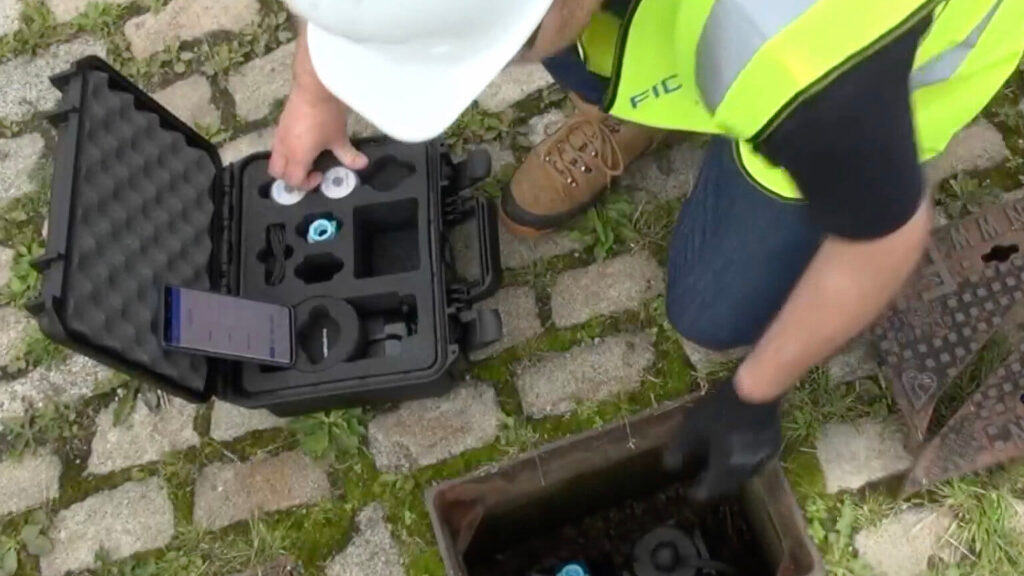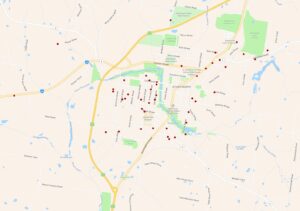Southern Downs Regional Council’s (SDRC) recent adoption of a smart water system marks a transformative step in water conservation and operational efficiency for the region. With Stanthorpe as the focal point, this project involves the installation of over 2,700 smart water meters and a state-of-the-art smart water network that enables 24/7 real-time monitoring. This advanced system empowers SDRC to monitor water usage in real-time, aids in timely leak detection, and manage water distribution with heightened precision.
As a result, SDRC has seen significant water and cost savings for the community—a crucial achievement in an area where water scarcity has a major impact on daily life and regional sustainability.
One of the first major successes of the initiative was the rapid identification and repair of a substantial leak on Minna Street. This leak, buried 1.6 meters underground and complicated by blasted rock, was losing approximately 20 liters of water per minute through a full radial fracture. With the smart system’s real-time alerts, the leak was quickly pinpointed and addressed, leading to an estimated annual saving of $12,000 for the community.
Overall, the smart water meter project has saved Stanthorpe a significant amount of non-revenue water, demonstrating the system’s substantial impact on detecting leaks and reducing losses.
Beyond immediate cost savings, the smart water network has transformed how SDRC and the community approach water conservation. SDRC’s ability to address abnormally high readings as soon as they occur means residents benefit from faster issue resolution and more accurate water usage data. Furthermore, this transparency fosters community engagement in water-saving practices, as residents can see the real impact of their conservation efforts.
This leak, buried 1.6 meters underground and complicated by blasted rock, was losing approximately 20 liters of water per minute through a full radial fracture. With the smart system’s real-time alerts, the leak was quickly pinpointed and addressed, leading to an estimated annual saving of $12,000 for the community.
SDRC’s initiative exemplifies how advanced technology in water management can drive regional resilience. With the smart water system, Stanthorpe now hosts one of the most sophisticated water networks in Australia, setting a benchmark for other communities aiming to leverage technology to conserve water and manage resources more effectively. This case study explores how SDRC’s smart water network has delivered tangible economic and environmental benefits, serving as a model for sustainable water management in similarly challenged regions.
Following the success of its initial smart water network implementation, SDRC didn’t simply rest on the achievement of its impressive 20 megaliters of water savings per year. Instead, SDRC saw this milestone as the foundation for further improvement and proactively reached out to Detection Services to explore advanced measures for even greater water conservation.
Despite the already low leakage levels across the network, SDRC remained committed to reducing water loss and improving non-revenue water (NRW) management for long-term efficiency and resilience.
This next phase of SDRC’s conservation mission introduced the innovative capabilities of FIDO AI, combined with Detection Services’ expertise in NRW management. FIDO AI, a cutting-edge leak detection technology, utilises advanced acoustic sensors and data-driven algorithms to pinpoint even the smallest leaks that might otherwise remain undetected. Working closely with Detection Services, SDRC strategically deployed FIDO sensors across several District Metered Areas (DMAs) within Stanthorpe, targeting zones where minor, previously untraceable leakages might still be occurring. This initiative aimed to identify any additional water losses, no matter how minimal, contributing to even more precise management of water resources.

With the FIDO AI sensors deployed across the network, SDRC has entered the second chapter of its mission to reduce NRW, capturing data at an unprecedented level of detail. This partnership with Detection Services underscores SDRC’s unwavering commitment to sustainable water management and continuous improvement, setting a proactive example for councils across Australia. By embracing emerging technology to optimise every facet of their water network, SDRC is not only safeguarding a precious resource but also fostering a culture of accountability and innovation in the water industry.
The Results
The final phase of SDRC’s smart water initiative delivered impressive results, showcasing the value of advanced technology in water conservation. With the deployment of FIDO sensors across targeted District Metered Areas (DMAs), SDRC achieved faster and more precise leak detection compared to standard acoustic surveys. These sensors, powered by FIDO AI, identified 45 additional leaks across the network, ranging from 0.1 to 5 liters per minute. Remarkably, this translated to over 21 megaliters of water saved annually—on top of SDRC’s already significant water savings from the first phase of their smart water network journey.

“The integration of AI has empowered our teams with deep, actionable insights and far more accurate assessments, especially in complex, high-density urban environments, transforming our leak detection capabilities,” said project engineer, Pank Mistry.
These sensors, powered by FIDO AI, identified 45 additional leaks across the network, ranging from 0.1 to 5 liters per minute. Remarkably, this translated to over 21 megaliters of water saved annually—on top of SDRC’s already significant water savings from the first phase of their smart water network journey.
By pushing the boundaries of traditional leak detection, SDRC, in partnership with Detection Services, reached its lowest recorded water loss levels, setting a new standard in regional water management. This outcome represents a considerable transformation for the Stanthorpe region, which had long struggled with substantial water losses and limited insight into its water infrastructure. Through this project, SDRC not only achieved greater transparency and control over its water network but also exemplified how proactive measures and innovative technology can have a powerful impact on resource conservation.
SDRC’s pioneering efforts, combined with Detection Services’ expertise, have solidified SDRC’s reputation as a leader in sustainable water management. This successful case study highlights the critical role that advanced leak detection solutions play in overcoming regional water challenges and sets a benchmark for other councils aiming to optimise their water networks, reduce losses, and secure long-term water resources.
Get in touch with us to discuss reaching your non-revenue water targets.









